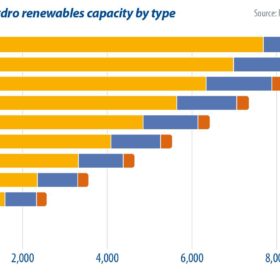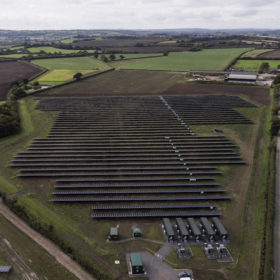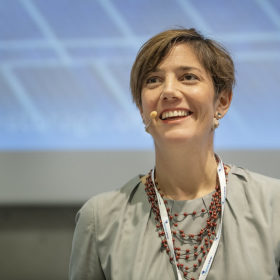European Green Deal promises better products – and ecodesign shows the way to making it happen
The European Green Deal needs better and longer-lasting products, and that includes solar panels, says ECOS, the environmental NGO specialising in ecodesign and standardisation.
Vietnam’s solar opportunities shine bright
The outlook for growth in Vietnam’s renewables sector is positive, writes Daine Loh, research analyst at Fitch Solutions. And the solar segment is one of the key drivers of this impressive growth. Vietnam still has substantial untapped solar power potential. Coupled with an increasingly supportive regulatory environment, and an expected surge in electricity consumption over the next decade, the country’s renewables sector is poised for a new dawn. And this will bring substantial opportunities for investors.
Is China’s Tax Policy Hindering the Solarization of its Digital Economy?
For the last three decades, China has been on an economic and technological growth path unequaled in size and duration. The country’s government is playing an active role in shaping the global digital economy, serving as one of its biggest backers and building a world-class infrastructure to support digitalization, by acting as an investor, solar power-developer – both terrestrial and in space – and consumer.
China’s stagnation is the world’s opportunity
On Oct. 29, China’s National Energy Administration (NEA) released cumulative connection data for the first nine months of 2019, when China installed just under 16 GW. This breaks down as 52% distributed generation projects and 48% ground-mount installations. The figure represents a decrease of 54% for the first three quarters compared to 2018. Numbers for the third quarter of 2019 were lower than anticipated in China, confirming what the IHS Markit PV Market Trend Survey for China announced in September. It indicated that a large part of third-quarter PV demand had been postponed to the fourth quarter. Participants still expect a large increase in demand in the fourth quarter, but are increasingly pessimistic about the size of the Chinese market this year.
Interview with Trina Solar on BNEF Summit Shanghai 2019
Dec. 3rd, 2019, Shanghai, Bloomberg New Energy Finance (BNEF) holds its annual conference, the BNEF Summit Shanghai 2019, in Ritz-Carlton Pudong. More than 300 experts of renewable energy industry from China and other countries of the world joined the meeting.
PV Magazine had an interview with Mr. Rongfang Yin, executive vice president of Trina Solar, about Trina’s business and view.
Green shoots of recovery
There has been significant progress in the decarbonization of the electricity supply in Great Britain in recent years, underscored by a record run of 19 days of zero coal generation in May and June 2019. With National Grid’s stated aim of operating a carbon-neutral electricity system by 2025, the co-location of PV with battery storage could play a key role. The proposition offers the twin benefits of enabling increasingly high renewables penetration while simultaneously improving network stability. Adam Sharpe of Everoze explores the role of co-located PV and energy storage assets within the context of the UK’s future decarbonization plans.
The sun rises on a European Green Deal
As the European Commission prepares its strategy for a European Green Deal, it is important to understand how solar can deliver on ambitious climate targets.
Implementing the blueprint for carbonless power
The emergence of hydrogen power is changing the dynamic of the power supply arena. With new technology coming through comes increased demand for specialist skills from other industries, including from manufacturers. The following article why these technical abilities will be vital in the development of hydrogen storage vessels and, crucially, ensuring the industry operates safely.
How solar could save the Mekong
A simple feasibility analysis shows the Mekong River in Cambodia would benefit from floating solar plants coupled with storage, rather than more hydro.
Success factors for hybrid microgrids
When it comes to hybrid microgrids, writes Fabian Baretzky, senior business development and sales manager for Dhybrid Power Systems, the incorporation of various sources of energy and complex requirements for long-term stability of the energy supply require expertise and an effective energy management system.










